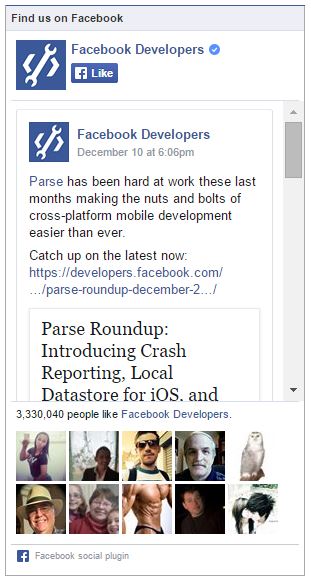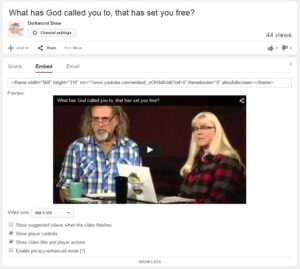In the last post I covered WHY multimedia use is essential in digital communications from churches. In addition, I covered the effective use of text and image media. This time I’ll talk about how to leverage audio, video, and social media on your church website.
Audio
Audio media on church websites is most often associated with sermon recordings, though if your church produces original music then you can consider posting that as well. Here are the key elements of using audio media on your church website:
1. Keep it short
As with anything online, people have short attention spans. Even a 10 minute sermon is pushing the limits. You’ll likely need to edit down the length of your audio. Consider a free product like Audacity to do the work. If you want to highlight more than one part of a worship service, for example, make them into separate files.
2. Pay attention to copyright
A few years back, CCLI added its Stream License. This allows you to podcast music in the CCLI catalog. As usual, you’ll need to log the pieces you publish with CCLI so that the artists will receive their royalties. If an item is not in the CCLI it will be hard to justify publishing it and will open your church up to liability. As with images, Fair Use and Creative Commons may come into play, though not as frequently.
3. Record MP3s
It almost goes without saying that you should be recording your audio as mp3 files. If you are doing professional grade recording you can always convert them into mp3s after the fact. If your sound equipment doesn’t have the capability to do digital recording, you’ll find a number of affordable options online. Most of them can be used handheld for up close recording or can be hooked into a sound system.
4. Register with iTunes
This process may require some technical support to get it setup on your website. Basically you need to make sure that all of your audio files end up in a “feed” which you then register with iTunes. This will allow people to subscribe to you on iTunes so that the podcast automatically downloads to their device. Here’s some more information about podcasting.
5. Consider an Audio File Host Service
There are several services out there for hosting audio files. Some will even make it easier for you to get registered on iTunes. These services will also allow you to embed your audio files on your website. Keeping the files off your website keeps your site lean and make it easier to backup or move the site. I recommend a service called blubrry.
Video
Did you know that YouTube is the second largest social media network? Most churches produce “video ready” content just by the manner in which in they carry out worship. Furthuremore, shut-ins, snow birds, and introverts will appreciate your video offerings. It’s the next best thing to being there. There are two types of video offerings churches should consider: live streaming and archiving.
With live steaming, you share your worship service in real time over the internet. I retract my earliest statement; THIS is the next best thing to being there, especially if the livecast also has a chat feature. For churches, I recommend the service “Livestream.” Livestream is free and is so easy to setup that you can have a stream going through a smartphone in minutes. Unfortunately, all the same copyright issues persist.
With archived video many of the same guidelines for audio applies. Keep it short; use a universal file format like .mp4; and most certainly host it on a free video sharing service such as YouTube or Vimeo, which you can then embed on your website.
When acquiring video recording equipment there are two considerations most churches should research: 1) Does it is have a microphone-in port for your sound system, and 2) Does it perform well in low light settings? To answer the latter you either have to spend some extra money or look closely at the user reviews.

Facebook Likebox
Social
I could write a whole book on how to effectively use social media with your church website, but here are the main points.
1. Link to your social media sites
Users will expect to see icons that link to your social media sites in your site header, footer, or both. You could take this a step farther by making your social media icons double as like/follow buttons. These give users the option to either like your pages or click through to them. Most social media outlets have a way you can embed a like/follow button. I caution you though that having too many of these types of embeds can slow down your site, as it takes time for third party elements to load.
2. Add sharing buttons on your posts
These are usually off to the left or just underneath your posts. Clicking on one of them allows the user to share the post on their social media feed, a great way to spread the word! Sometimes these sharing buttons will also show how many times an item has been shared.
3. Consider embedding a facebook likebox
Similar to like/follow buttons, you need to be careful about embedding too much third party content on your site, or you risk slowing down your site load times. Having said that, these can be an effective way to integrate your social media into your site. The facebook “likebox” is a versatile widget that allows users to like your facebook page, see images of their friends that have liked your page, and/or see your recent posts.
4. Link back to social media using “cards”
Cards have come into fashion in the last year. They are nicely-styled representations of social media posts that can be embedded on your website. These were popularized by Twitter, but can be used with facebook, Pinterest, and a slew of others. Using cards brings relevance to your site by allowing you to reference something being talked about in an online community. It also makes it easy for the user to follow the post back to the social media network to get more context. It’s even a great idea to reference your own social media posts in blog post to draw your readers into the online community. Furthermore, it will help with your Search Engine Optimization. Here’s how you embed a facebook post.
5. Enable social media for commenting
There are two advantages to doing this. The first is that it allows users to log into your comment system using their social media login. This means that they don’t have to register for your site, which will also raise their trust level because they don’t have to worry about another set of login credentials. Secondly, when people offer a comment, most systems will give them an option to share the post and comment on their social media network. It’s a “win-win” for building online community.
This concludes the section on using media effectively on a church website. There is a lot to know, but keep in mind that at the end of the day you are using your website to tell a compelling story. Well thought-out use of media will help you do that, while ineffective use of media is just noise.


